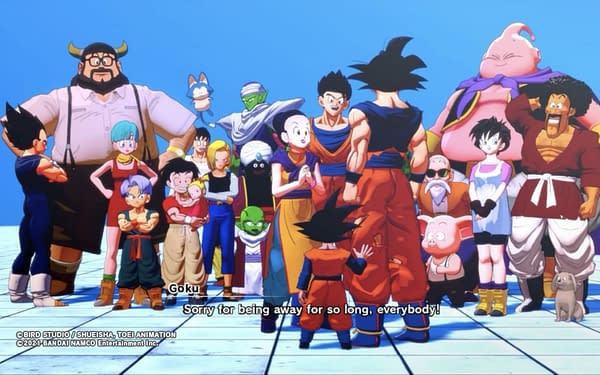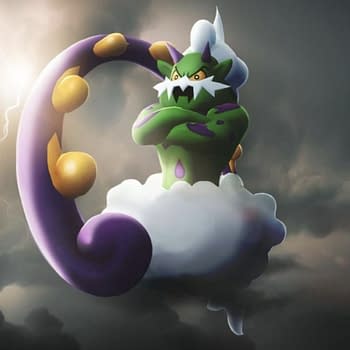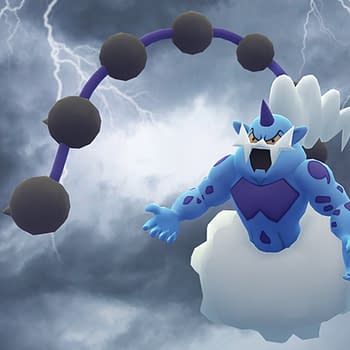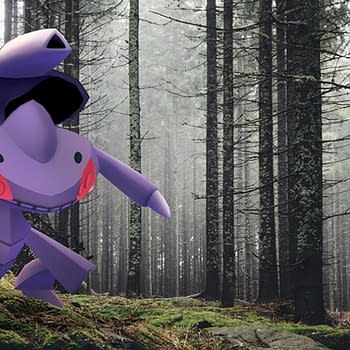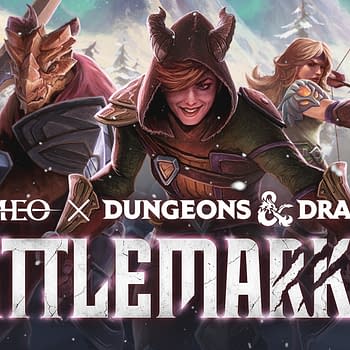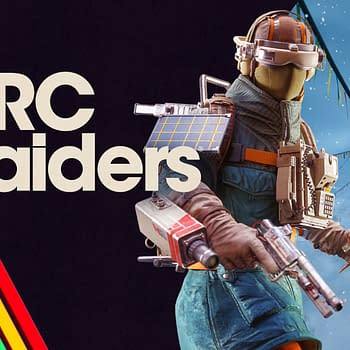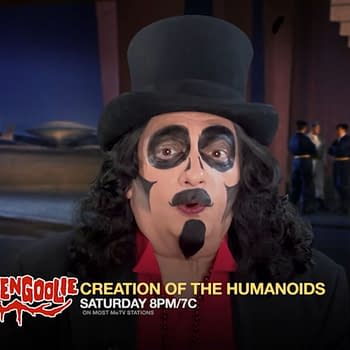Posted in: Bandai Namco, Dragon Ball Z: Kakarot, Games, Video Game Publishers, Video Games | Tagged: Bandai Namco, dragon ball, Dragon Ball Z, Dragon Ball ZL Kakarot
Thoughts On Dragon Ball Z: Kakarot's Buu Saga Adaptation
Last month, Dragon Ball Z: Kakarot was released for Nintendo Switch. This semi-open world game puts you in the shoes of Goku, Gohan, and the rest of the Z Warriors for a retelling of the four main Dragon Ball Z sagas: the Saiyan Saga, the Frieza Saga, the Cell Saga, and the Buu Saga. You can look forward to a complete review as well as gameplay guides to Dragon Ball Z: Kakarot but first, let's break down how this game by Bandai NAMCO adapts Akira Toriyama's iconic story. Now that we have covered the Saiyan Saga, the Frieza Saga, and the Cell Saga, let's see how the game adapts The Buu Saga.
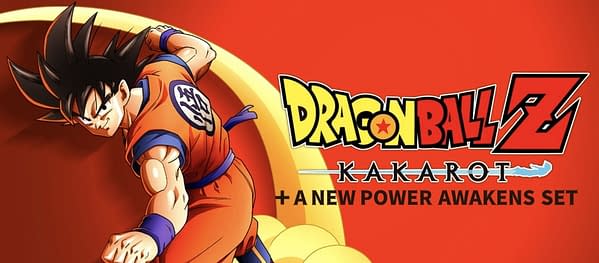
Leaving the original timeline of Dragon Ball Z: Kakarot
I'll start with something that I feel bad even saying considering how much joy Kakarot has given me. It's true, though, that the very start of the Buu Saga was the least fun I had playing the game. Now, let me break that down, as this isn't exactly a Dragon Ball Z: Kakarot issue but rather something built into the fabric of DBZ itself as a narrative.

The Cell Saga ends the timeline that began with the Saiyan Saga. From the beginning of the gam until now, we grew up with Gohan and were pretty much there for every major event in his life. Even more than Goku, Kakarot feels truly about Gohan. We spent the middle of the Saiyan Saga not with Goku on King Kai's planet but with Gohan as he trained with Piccolo. We spent most of the Frieza Saga with Gohan and then, from the middle of the Cell Games and on through a ton of post-saga content… we were Gohan.
What happens at the start of the Buu Saga, which Dragon Ball Z fans already know, is a substantial time jump. We enter into a world that is the same but changed. It is unfamiliar in many ways, which is exacerbated by some odd gameplay choices including a new baseball mechanic which is for some reason more difficult than beating any of the series' Big Bads!
However, the truth is, once you gain your footing in the Saga, the fun comes rushing right back in.

Gohan's life
For much of the Buu Saga's early half, we see through the eyes of Gohan. This is effective in not only capturing the fun and whimsy of the Great Saiyaman storyline and introducing the Gohan/Videl romance, but it gives us an emotional place from which to experience Goku's return for the World Tournament.
Before this, though, we get to have a lot of fun with slice-of-life stories which all serve to introduce the new status quo. This is largely where Dragon Ball Z: Kakarot excels: not only adapting the iconic sagas but situating them between slice-of-life gameplay.
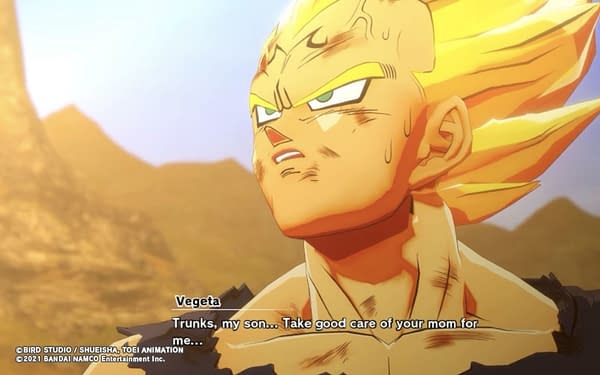
Vegeta's fall and redemption
The main action of the Buu Saga begins how fans of the anime and manga will remember. We battle as Goku, Vegeta, and Gohan against Babidi, Dabura, and their minions as they attempt to sap our energy to resurrect Majin Buu. It is here that perhaps the most dramatic character arc of Dragon Ball reaches a fever pitch: Vegeta, frustrated that he may lose his one chance to prove himself against Goku while he is back to life for a single day, gives into Babidi's evil spell. He becomes Majin Vegeta, embracing the evil in his heart so that Goku will fight him. In many ways, Dragon Ball Z: Kakarot adds to this arc beyond just adapting it. Through Vegeta's fall, we get the sense that he is second-guessing himself. We see the internal struggle of his pride and his new role as a family man collide as he selfishly fights Goku and then, when it's over, continues to pay the ultimate price. The iconic scene where Vegeta embraces his son Trunks for the first time before sacrificing himself to take out Buu, who he blames himself for bringing forth, is emotionally riveting and beautifully adapted.
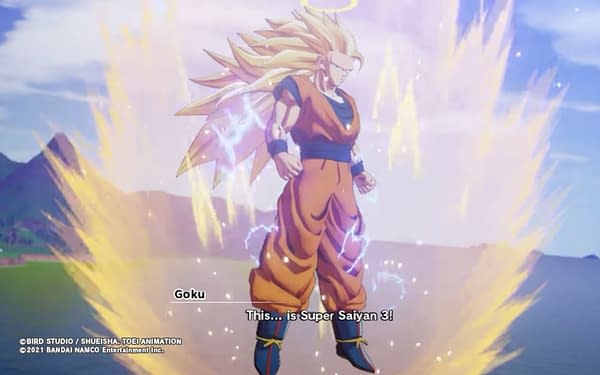
The battles with Buu
The rest of the Buu Saga plays out as is in the anime. Majin Buu survives Vegeta's sacrificial assault, battles Goku who utilizes Super Saiyan 3 for the first time in a stunning battle, turns good after befriending Mr. Satan, pushes the evil out of him which forms Evil Buu, Evil Buu absorbs good Buu to become Super Buu, and then Super Buu fights Gotenks, Mystic Gohan, Goku, and pretty much everyone before becoming Kid Buu, the final villain of Dragon Ball Z: Kakarot.
Whew!
Now, this is all VERY exciting to play. However, one thing that does put this Saga a bit behind the others is the extended, sometimes endless cutscenes. I love the cutscenes in this game, with the Majin Vegeta sacrifice and Gohan's destruction of Cell being standouts… but this was a lot. There is a huge sequence in the middle where Buu's storyline plays out without him interacting with any playable characters. I do appreciate how Dragon Ball Z: Kakarot sorts some characters between playable (Goku, Vegeta, Gohan, Piccolo, Future Trunks, Gotenks, Vegito) and others as support. It helps streamline the gameplay and gives the player a series of nuanced POVs. I don't think adding, say, Mr. Satan as a playable character would've helped. I'd instead suggest perhaps playable side quests splitting up the cutscenes a bit here.
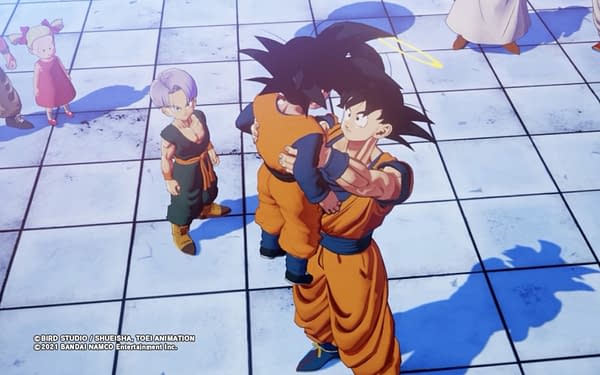
Still, when the player does control the action, the Buu Saga is exciting, emotional, and lots of fun. Dragon Ball Z: Kakarot does a supernaturally good job of making death matter in a world where people can (pretty easily) come back from the dead. The scenes of Goku interacting with his family knowing he'll go back to Otherworld soon are actual tearjerkers here, even knowing that all is going to work out in the end.
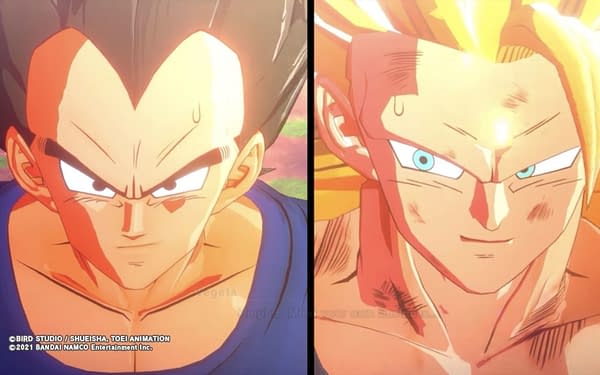
There are chilling aspects of this Saga too, including a bit that allows the player to explore the world after Buu has killed every human. The normally busy streets are empty. It feels oddly, disturbingly real.
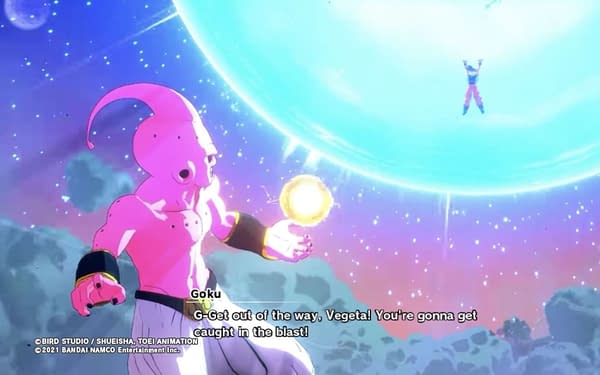
Dragon Ball Z: Kakarot ends… kind of
The Buu Saga, which ends with Vegeta accepting Goku as "number one" and the two teaming up to allow Goku to deliver a final Spirit Bomb to destroy the threat, is a fitting end. However, it is, thankfully, only an end. The game continues with a long list of side quests that allow you to enjoy the newly instated world peace. We'll get to those in the next installment of this series.
